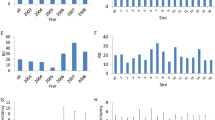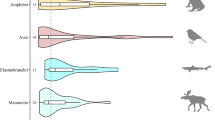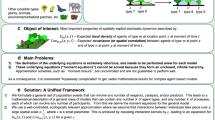Abstract
HUMAN populations have always proved favourite material for analysis by statisticians and others interested in mathematical theories of population growth. From the experimental aspect, however, humans are far from being ideal biological material, so that other animals, such as protozoa, mammals and insects, have to be used; although it does not yet appear to be fully realised how suitable the latter are for this type of work. The theory of bio tic potential and environmental resistance1 has done much to create a new interest in population studies in that it attempts to place the problem upon a quantitative experimental basis. Working with Tribolium confusum, Chapman demonstrated that, irrespective of the initial density, a point of equilibrium is eventually attained after which the population remains relatively constant, provided the floury medium is renewed frequently enough to remove waste products and maintain an abundance of food. He concludes that equilibrium is attained when the bio tic potential is equalled by the environmental resistance, and that the lack of population increase is not due to the absence of eggs or their infertility, but on account of the eating of eggs and pupae by the adult beetles.
This is a preview of subscription content, access via your institution
Access options
Subscribe to this journal
Receive 51 print issues and online access
$199.00 per year
only $3.90 per issue
Buy this article
- Purchase on Springer Link
- Instant access to full article PDF
Prices may be subject to local taxes which are calculated during checkout
Similar content being viewed by others
References
Chapman, R. N., “The Quantitative Analysis of Environmental Factors”, Ecology, 9, 111; 1928.
MacLagan, D. S., “The Effect of Population Density upon Kate of Reproduction”, Proc. Roy. Soc., B, 111, 437; 1932.
Author information
Authors and Affiliations
Rights and permissions
About this article
Cite this article
MACLAGAN, S., DUNN, E. Experimental Analysis of Population Growth. Nature 135, 33–34 (1935). https://doi.org/10.1038/135033a0
Issue Date:
DOI: https://doi.org/10.1038/135033a0
Comments
By submitting a comment you agree to abide by our Terms and Community Guidelines. If you find something abusive or that does not comply with our terms or guidelines please flag it as inappropriate.



